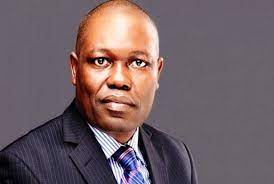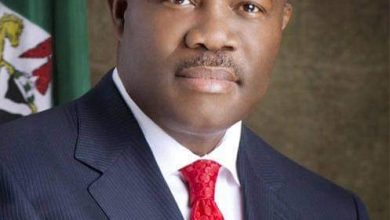ECOBANK’s TACTICAL BATTLE AGAINST ITS TOUGHEST HEADACHE

Ecobank Transnational Incorporated (ETI) cast the image of a pan African bank . From the Anglo-West Africa, AWA, to Central, Eastern and South Africa (CESA) as well as Francophone Africa , it navigates African continent with a zeal to cater to the varied appetites of its customers in a constantly changing world and stay ahead of the competition; it has invested massively in human and intellectual capital, new technologies and innovative solutions in the last few financial years in a bid towards ensuring that it continues to provide best in class quality services that create value for all its stakeholders
The above initiatives ,notwithstanding , the strategic compass steered by it is a mixed bag of fortunes and misfortunes; the voyage is littered with opportunities and threats, dark and deleterious spots ; but the management, no doubt , is not relenting ,developing iron teeth and breaking some operational hard nuts to remain highly competitive .
A cursory look at ETI in the above regions and countries in the first half of 2022 shows the differential impacts of external environments on its profitability growth. While countries under Anglo-West Africa, AWA remain its toughest headache , countries in the Central, Eastern and South Africa (CESA) as well as Francophone Africa are its soothing balm . Anglo-West Africa seems to be on the back foot as operations remain weak here . In the just released half year results released by the bank, in the English-speaking West Africa, (AWA), it recorded 8% growth in profit between H1 2021 and H1 2022 against the growth of 37% in Central, Eastern and South Africa (CESA) and 48% in Francophone Africa . While Anglo West Africa countries are posing the same threat relative to others , the continental spread of ETI’s operations has helped it hedge against the poor performance as the economies of Ghana, Nigeria, Sierra Leone and Liberia fizzle .
Incidentally , Nigeria remains the hardest nut for the bank to crack . With over 200m people, a gross domestic product (GDP) of over US$400bn and a population growth rate of 2.6%, the country remains a primary African market, even with disposable income ripped by an inflation rate of 19.6% for July 2022. This perennial sick baby called Nigeria is where Ecobank is buffeted with relatively high CIR, high Cost of Risk (CoR) and low Loan-to-Deposit Ratio (LDR)and these are weighing heavily on the lending group’s bottom line in the country ;its business segment has lagged others concerning profitability even as less than a fifth of its gross operating revenues comes from Nigeria .
A look at the bank’s operating revenue on regional basis shows that AWA contributed the least at N268b out of the total N949b while UEMOA and CESA contributed N282b and N281b respectively to the pool . Ecobank Nigeria ,however ,contributed N118b to show its dominance in its group .Further details indicate CESA made the greatest progress as its contribution in the first half of 2022 increased by 38% year on year while AWA and UEMOA contributions jumped 16% and 17% respectively against Nigeria’s 14%. Nigeria further confirmed its lame duck performance as its return on equity and cost income ratio at 4.7% and 81.1% respectively remained the worst when compared to UEMOA ,CESA and AWA’s 24.7% and 50.7 %, 23.8% and 47.7% and 28.3% and 45.0% respectively .
However , Ecobank’s strategic capability to exploit opportunities and minimize the threats in this voyage is its critical success factor . The bank appears to be getting it right and its management remains its strongest asset ; its critical success factor, no doubt, is the understanding of its the differential business and environmental competitive position of the individual countries and regions of its operations or their the inherent “attractiveness” or otherwise ; this understanding gives some crude indication of the relative potential for profits in each country and market . .
The negative impacts of its operations in the Anglo West Africa were neutralized by other countries .Analysts believe that diversity across the regions has supported the group’s earnings growth, mainly with profits earned in UEMOA and CESA regions. The management of ETTI has mastered the rope and developed iron teeth to crack the hard nut .
ETI , is taking the advantage of this to consolidate its position as the pre-eminent provider of financial services in the African banking sector and at the same time minimizing the threats from its areas of operations ; it is leveraging this strong franchise with the attendant cross-sell opportunities. The bank is exploiting this unique advantage to drive its operations within this continental spread.
A true banking behemoth, ETI has worked effortlessly to a true profitable continental leader. Nowhere else is this better demonstrated than the bank’s half year 2022 despite the magnitude of macroeconomic headwinds unleashed in key countries of its operations ;it pushed through economic headwinds in H1 2022 with a rise in top-line and bottom-line earnings. It increased top-line earnings by suppressing costs and raising yields on assets . Analysts noticed an improvement in liquidity, shareholder’s return, and asset utilization . Its bottom and top lines vaulted by 15% and 24% respectively ; it wrenched up these lines with a deft application of management’s experience .
GROSS EARNINGS
Between Half year 2021 and 2022 Ecobank boosted the African economy with over ten billions dollars gross loans and advances to customers with commercial bank loan growth offsetting by lower CIB and Consumer bank loans.
If anything, a racy earning assets figure should result in more robust earnings except may be spreads or the difference between interests earned and interests paid are not quite attractive. It could also be because commissions from non interest dependent transactions are dropping. For ECOBANK Group, a pan African bank , increased in its earning assets boosted its gross earnings as both interest income and non-interest income . It had gross earnings rev up by 15% N503.63b from N439.49b in the first half of 2022 on the back of its Interest income which increased by 12% to N317.23b from N282.75b and Non-interest revenue by 16% to N173.78b from N150.10b.
INTEREST INCOME
Although its interest expense inched up by greater percentage at 14% or N111. 66b against N97.97b compared to its interest income , its net interest income , which is a guide to how well a bank manages the interest rates it pays for borrowing and lending, maintained this positive posture at 11% growth to give a positive outlook to pre-tax profit. Its NII benefited from higher interest rates as several Central Banks increased their benchmark interest rates to curb inflationary pressures. As a result, net interest spread, the difference between the average rates we charge on our interest-earning assets and the average rates the bank paid on its interest-bearing liabilities, increased by 12 basis points. As a result, the net interest margin (NIM) expanded by seven basis points to 5.1%.
NON INTEREST INCOME
By hauling up its non interest income at a greater paces than its interest income , EcoBank showed its dexterity . Increased in Non-interest revenue (NIR) reflected strong client and customer activity. Net fees and commission income rose 12%, driven by significantly higher spending on cards, cash management fees, and credit-related fees as its Net trading income increased by 24%, driven by solid client activity in the trading of currencies, partially offset by lower fixed-income trading income. As a result, the NIR ratio, which measures the share of NIR of total net revenue, improved to 45.8% versus 44.8% in the prior year. While its Fee and commission expense skyrocketed to N16 .03b from N9.40b , an increase of 71%, the bank still maintained a positive trend in Fee and commission income at 21% moving up to N112.21b from N 92. 84b. To consolidate the trend in the non interest income, its Net trading income rose by 27% to N68.37b from N53.90b 895 . However , though its Net investment income which stayed flat and its other operating income which dipped by 38% attempted to play spoilers , they were not strong enough in absolute term to pull the non interest income to a negative track .
COST CONTAINMENT PAID OFF
Although during the period under review ,its operating expenses amounted to N212.32b from N196.62b , indicating an increase of 8% mainly from employee-related expenditures and other operating expenses predominantly driven by higher inflation ,the bank’s revenue expansion at greater paces at 13% and stringent cost containment measures improved the cost-to-income ratio to a record 56.0% compared to 58.7% a year-ago. Also, the cost-to-assets ratio, which measures costs to average assets, was 3.7%, flat on the previous year
PROFITABILITY
Sequel to the above critical initiatives as well as managerial savvy displayed , the pre-tax profit of the leading bank, buoyed by 28% in the period to N108.96b from N85.32b . This helped to shoot up pre-tax profit margin to 21.6 percent, up from 19.4 percent; with that rise in pre-tax profit, the bank’s net profit flew 25% to N77 .31b from N61.92b in the period, leading to a rise in net profit margin to 15.4 percent from 14.2 percent.
The second quarter result is the beginning of another attempt to wring good profit as was done in the last financial year, in its attempt to reaffirm leadership of the sector. .
To cement its place as one of the most profitable banks , its return on equity (ROE), and return on assets (ROA), improved to 19.4 per cent and 1.4 per cent in 2022 from 16.1 per cent and 1.2 per cent respectively in 2021 .
BACKTRACKING BALANCE SHEET POSITION
However , the bank’s total assets fell by 2.4 per cent, to N11.40 trn from N11 .68 trillion in the preceding ; while shareholders’ fund fell by 10.3percent to N823.24b from N917. 90b . Also , its loan to deposit ratio and capital adequacy ratios were 50.9 per cent and 14.8 per cent respectively.
DEPOSITS LIFTED BY DIGITAL BANKING STRATEGY
Despite this decline in shareholders’ fund, the bank still pulled in increased deposits marginally as total deposits grew N19.75trillion from N19.14b . The growth in the bank’s customer deposits led by increase in savings and current accounts ; this provided it with a platform to rebalance its deposits mix. In the period under review its costly deposits were foregone in favour of cheaper and more stable deposits resulting in a reduction of expensive and shorter dated deposits . This culminated in the reduction of cost of funds.
The results were a testament of the bank’s efforts to deepen its roots in the retail segment. This has led, in the main, to a remarkable increase in the volume of transactions across various electronic platforms as well as significant customer acquisitions. This growth in transactions on the bank’s digital channels continues to support the bank’s retail push as fees from e-products increased . The bank also stated that it would continue its investment in the retail end of the market to consolidate its leadership in both the corporate and retail segments.
ROBUST RISK MANAGEMENT
Also, the bank’s robust risk management framework ensured that the cost of risk stayed flat at 1.81% from 1.80% in 2021 .This was achieved despite 6per cent Net impairment charges on loans re-affirming the bank’s enhanced asset quality. In the same breadth, coverage ratio increased to 113.5 per cent from 86.7% over the same period, an indication of prudent disposition consistent with the bank’s known record of excellent credit risk management. .Sequel to this Non-performing loans (NPL) ratio improved to 6.2% from 7.4% .As a result of a modest improvement in efficiency, the bank’s cost-to-income ratio settled at 56.0 per cent from 58.7 per cent in 2021 .
GMD VIEWS
Speaking on the performance for that financial year, Ade Ayeyemi, CEO, Ecobank Group noted that the bank’s “results for the first six months of 2022 reflect not only the benefits of the firm’s diversification but also our resilience and capabilities to continue serving our clients and customers in a challenging environment and still generate adequate returns responsibly for our shareholders. As a result, we delivered a return on tangible equity of 19.5%, a record, and increased earnings per share for shareholders by 24% year-on-year. In addition, profit before tax increased by 24% to $261 million and by 53% if you adjust the increase for the significant depreciation of some of our critical African currencies to the US dollar
Ayeyemi continued: “We performed well because of our investments, including in technology, and Ecobankers’ continued dedication to meet customers’ financial needs, despite a challenging operating environment of high inflation, weakening African currencies, worsening government fiscal balances and lowering economic growth. In our Consumer Banking business, pre-tax profits increased 43% on higher deposit margins, loans, and debit card spending. In Corporate and Investment Banking, profits rose 33%, as we gained share in the letters of credit market, payment volumes increased by 43% on Omniplus, and FX volumes grew by 25% as client activity rebounded from the pandemic. In addition, an increase in SME activity and growth in the payment business lifted profits in Commercial Banking by 15%.”
“Our investments in technology and digital capabilities have contributed to a reduction in our cost-to-serve. Along with revenue growth, the outcome is our record cost-to-income ratio of 56%. In addition, we increased impairment charges to reflect heightened credit risks. More importantly, we have proactively built central impairment reserves of $206 million, which we can deploy in a stressed credit environment. At the same time, our balance sheet remains liquid and adequately capitalised, providing us the capacity to serve our customers better.”
“Our service to our customers and communities, anchored on our vision to advance Africa’s economic development and financial integration, is widely recognised. Recently, Euromoney adjudged Ecobank for 2022 – Africa’s Best Bank, Africa’s Best Digital Bank and Africa’s Best Bank for SMEs. These accolades are a testament to our passion for serving clients and customers and our continued investments in technology, processes, and people. I am extremely proud of my colleague Ecobankers and thank them for their diligence. As always, we are passionately working towards realising our vision and remaining the bank that Africa and friends of Africa trust.” Ayeyemi concluded.
STRATEGIC CHOICES THAT DELIVER
To survive and succeed, a leader is expected to understand forces which influence or have to be taken into account in the development of strategy. Such leaders believe strategy development is about fit; about identifying opportunities in the environment and building strategy by matching resource capabilities to those opportunities . The belief is that a company in a more attractive environment performs better than the one in a less attractive environment. ETTI’s management’s understands those forces at work in its different locations across Africa .
The management has continued to adjust the bank’s internal strengths to the environmental opportunities in the few years. It is also identifying , combining , re-combining , and managing the resources, competencies and capability to explore their potential and perform better than the competitors on the customer needs, preferences ,and desires satisfaction.
The reason for this may not be far to seek. The advantage of an organization consists in identification of the internal core competences, mainly based on knowledge assets and intellectual capital, that align with the key success factors of the market that gives competitive advantage, better performance and better market position .
The group has circumnavigated the Nigerian Central Bank’s monetary policy tightness and foreign exchange squeezes to keep its group balance sheet relatively healthy. Growth in East and Central African markets has helped to reduce the severity of challenges in Nigeria and South Africa.
Beyond the identifying differential opportunities in different countries and matching resource capabilities to those opportunities ,ETI focuses on its resources and competencies , taking a stretch view of strategy to deliver value money advantage . This may not be farfetched . They influence a company strategic success, explain differences between organizations, potential uniqueness and therefore superior performance .ETI is exploiting competitive advantages from this initiative by building strategy on its unique competencies and resources , seeking out markets where competencies have special values or try to create new markets on the basis of such competencies . The outcomes of both strategies are palpable in the first half of 2022 .
PERFORMANCE HIGHLIGHTS
Impairment Charges Take a Tumble
.
The impairment charges on the group’s financial assets rose to N48.02m from N43.57m in H1 2021, reflecting modestly heightened credit risk. The increase resulted from a +8.38% rise in loans and advances to customers and lower loan recoveries on the back of slowly melting growth.
As seen in the latest result of the group, the Nigerian business segment had the lowest impairment charge, followed by UEMOA (Francophone West Africa) and AWA (Anglophone West Africa). At the same time, the CESA (Central, Eastern & Southern Africa) region saw an impairment of N17.41m
ETI’s H1 2022 result showed top and bottom-line earnings growth, which rose by +13.71% and +27.7%, respectively. The group’s effort at investing in technology and digital enhancements supported the fall in the cost-to-income ratio (CIR) to 56.0%. However, impairment charges increased due to higher credit risk. Analysts noticed the improvement in ROE and ROA, but LDR remained unchanged despite the increase in deposit and loan portfolio.
At a recent Investor’s call conference, the management announced plans to issue a five-year promissory note to solve the liquidity constraint in its balance sheet. Initially, the bank preferred short-term funding, but the inverted yield curve in its different regions has nudged consideration in medium-term financing.
Share Price: Understanding a Bear Crawl
ETI’s YTD share price movement reflects a volatility trend, staggering around N8.90k and N11.95k in January. In February it rose to the highest of N13.10k by +9.6% but afterward continued the systemic fluctuation. The share price fell below the resistance of N10.00 in June following the first profit-sharing to investors in 5 years, it finally settled at N9.90k on 4th August 2022
Gross Earnings Climb as Continental Operations Show Resilience
ETI’s gross earnings for H1 2022 improved by +13.71% (Y-o-Y) to N503.63bn from N442.89bn in H1 2021. Interest income grew by +12.19% (Y-o-Y), supported by increased investment securities and loan advances. The significant rise in net interest income and non-interest revenue bolstered the uptick despite the +13.97% rise in interest expense.
Profitability Grows as Fees and Commissions Head North
Following the decline in H1 2020, the group’s PBT recovered for the second consecutive time in H1 2022, where it grew by +27.7%; the growth came on the back +11.25% rise in net interest income and a +20.9% hike in fee and commission income.
Regarding regional performance, UEMOA and AWA contributed the highest revenue growth, with CESA as the third, while Nigeria contributed a minor figure of N17.9m.
PBT had a slightly lower percentage growth of +24.3% in US dollars, from US$210.07m in H1 2021 to US$261.21m in H1 2022 (see chart below).
The cost-to-income ratio (CIR) Claws Down
ETI’s H1 2022 results showed an improvement of -4.67% (Y-o-Y) in its cost-to-income ratio (CIR), declining from 58.7% in 2021 to 56.0% in 2021. The growth in CIR was spurred by a +13.3% rise in operating income and a +7.98% growth in operating expenses. Analysts noted that ETI has consistently reported a decline in CIR over the last five years, indicating increased operating efficiency
Total assets Ratchet Up
Total assets have risen steadily over the last five years, from N8.09trn in H1 2019 to N11.41trn in H1 2022. Total assets rose by +3.54% (Y-o-Y) from 11.41 in 2021 to 11.02 in 2022. The continued rise in total assets was due to a combination of growth in loans and advances to customers and additional investment in securities, which accounted for 34.55% and 24.06% of total assets, respectively. Analysts point out that, despite selling 81.06% of its assets, ETI lost $1.37 billion on property and equipment sales. This suggests that the lender carried aged assets on its books and has N14.27bn in assets held for sale
Return on Equity (ROE) Exposes ETI’s Soft but Resilient Underbelly
Despite ongoing economic uncertainty, ETI increased shareholder returns by cutting its cost-to-income ratio (CIR) by 4.00%, resulting in a lower ratio of 56.0% in H1 2022. ROE rose from 7.79% in H1 2021 to 9.39% in H1 2022. The total increase in ROE represents a N9.39k return on every hundred naira of equity invested in the group
Loan-to-Deposit Ratio (LDR) Nods Below Nigeria’s 65% Prudential Threshold
ETI’s loan-to-deposit ratio (LDR) remained at 54.5% in H1 2022. The group saw its highest five-year ratio of 59.9% in 2019, with a downward trending LDR in previous years. Despite the growth in the group’s deposits of 5.56% between H1 2021 and H1 2022, the lender’s LDR remained below the CBN’s minimum threshold of 65% ).
Return on Assets: Making Assets Sweat Sweetly
ETI’s return on assets (RoA) rose from 0.57% in 2021 to 0.68% in 2022, representing an 11-basis point rise. Analysts observe that the bank acquired some assets during the period and utilized the assets to generate N77.31 bn in net income
However , analysts believe Ecobank Nigeria would have to learn to survive the brutal Nigerian reality by cutting down its CIR and CoR, raising its LDR and reducing its cost of funds.
Moreover , following the CBN’s policy rate rise to 14% ETTI could exploit this to grow its net interest income as well even as it is being speculated that the policy rate may rise 100basis points to 15% as the regulator tries to stem domestic inflation.
Sequel to this policy change ,Nigerian banks have climbed a performance escalator from the beginning of H1 2022, and the gains look reliable. The banking sector has seen a sustained rise in gross earnings and after-tax incomes. The key drivers are increases in digital incomes, the widening spread of net interest incomes, and modest growth of gross earnings. . Still, it has done fast-footed business in Francophone West Africa and East and Central Africa, with Anglophone West Africa stubbing its leg as rising inflation rates and tight monetary policy stall growth.
.






